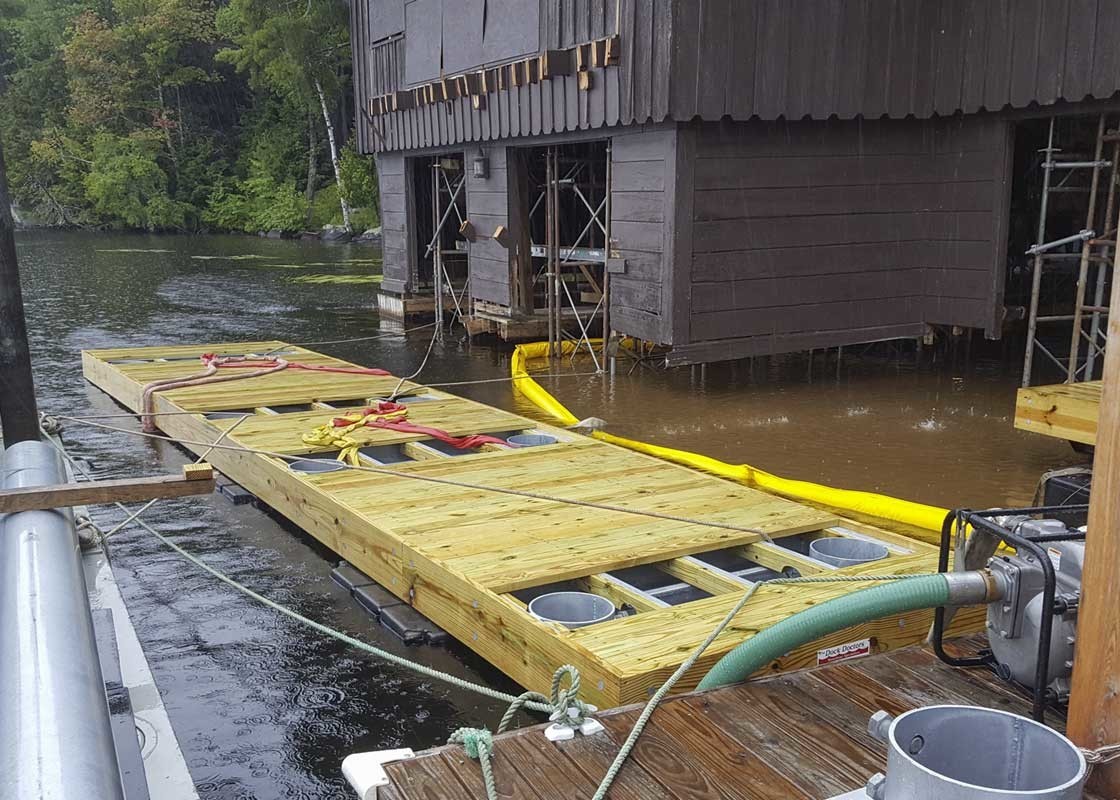Efficient Dock Repair Work Techniques: Guaranteeing Architectural Stability
Making sure the architectural integrity of docks via efficient repair work strategies is vital for the long life and security of aquatic facilities. Ultimately, selecting the right repair service materials, such as corrosion-resistant alloys and composite products, is vital for sturdiness.
Evaluating Dock Damage
Evaluating dock damages is a vital initial step in ensuring the architectural integrity and safety of any docking facility. This first examination entails an extensive evaluation to recognize both noticeable and surprise damages. Trick elements to check out include the dock's structure, pilings, outdoor decking, and equipment. Each element needs to be inspected for indications of wear, rot, corrosion, or other kinds of degradation that can endanger the architectural integrity.
Architectural engineers or qualified examiners generally do these evaluations utilizing specialized methods and devices. For example, underwater assessments could use sonar devices or remotely ran automobiles (ROVs) to identify submerged damages. Over water, visual inspections are complemented by utilizing wetness meters and various other diagnostic devices to reveal underlying issues not immediately visible to the nude eye.

Finding Repair Service Products
Picking the ideal repair products is a pivotal step in the dock restoration procedure, one that directly affects the long life and efficiency of the repaired structure. Material option should be driven by factors such as environmental problems, load-bearing demands, and compatibility with existing dock parts.
Along with wood, composite products are increasingly prominent because of their toughness and reduced maintenance requirements. Compounds, normally made from a blend of plastic and wood fibers, supply exceptional resistance to rot, bugs, and UV damages. For metal docks, picking corrosion-resistant alloys such as galvanized steel or marine-grade aluminum is necessary to avoid corrosion and guarantee architectural honesty in saline water conditions.
Epoxy materials and marine-grade sealers are crucial for repairing cracks and sealing joints, offering a water-proof obstacle and improving the dock's overall strength. By carefully picking high-quality products, dock repair work can attain long-lasting results, consequently protecting versus future destruction and making certain risk-free, dependable use.
Architectural Support Methods
Reliable structural reinforcement methods are essential in guaranteeing the stability and long life of dock repair services. One fundamental approach involves using steel or composite support bars (rebar) within concrete frameworks. Rebar gives added tensile stamina, protecting against splits and distributing tons much more evenly. This approach is especially efficient for docks revealed to hefty tons or extreme environmental conditions.
Another important method is the application of fiber-reinforced polymers (FRP) These materials provide high strength-to-weight proportions and superb resistance to deterioration, making them excellent for enhancing wooden or concrete anchors. FRP can be used in strips or sheets and adhered with epoxy materials to improve structural integrity.
Bracing and securing systems also play an important duty in structural support. Cross-bracing, utilizing metal or wood beam of lights, can counteract side pressures, decreasing guiding and activity. Anchoring systems, such as helical piers or driven stacks, give a steady foundation by transferring lots to deeper, more steady soil layers.
Last but not least, the combination of load-distribution plates can assist disperse weight more equally throughout the dock's surface, alleviating localized tension points. These methods jointly make certain that docks continue to be durable and secure, capable of withstanding the roughness of their operational environment.
Advanced Repair Approaches

An additional advanced technique entails undersea welding, which enables for repairs to be conducted without the demand to dewater the area. This technique is particularly useful for resolving architectural problems in submerged dock parts, making sure minimal interruption to procedures. Enhanced welding strategies, paired with robotic systems, supply precision and reliability, consequently extending the lifespan of the dock.
Additionally, cathodic protection systems are executed to avoid rust in metal dock frameworks. By using sacrificial anodes or pleased present systems, these strategies properly mitigate the electrochemical processes that lead to product wear and tear.
Finally, progressed tracking technologies, such as architectural health surveillance (SHM) systems, supply real-time data on the problem of dock structures. These systems make it possible for proactive upkeep and prompt treatments, ultimately ensuring the long-term architectural stability of the dock.
Maintenance and Prevention
Upkeep and avoidance are essential ideas that underpin the longevity and safety of dock structures. Routine evaluations are vital, enabling for very over at this website early detection of wear and tear, possible weaknesses, and environmental influences. A positive approach, including regular Go Here look for corrosion, rot, and architectural changes, mitigates pricey repairs and prolongs the dock's functional life.
Safety nets should consist of using safety layers to metal components to guard against corrosion and using treated timber to withstand decay. In addition, ensuring proper drainage and ventilation can stop water buildup, which is a common root cause of structural deterioration. Integrating quality materials and adhering to producer guidelines during building and repair stages also play vital duties in enhancing durability.

Training workers in dock upkeep best methods makes sure constant application of precautionary procedures. Leveraging technical advances, such as drones for assessments and sensors for real-time tracking, can even more boost upkeep efforts. By focusing on maintenance and avoidance, dock owners can make sure structural honesty, functional safety, and cost-efficient management over the dock's lifespan.
Verdict
In conclusion, maintaining the structural integrity of marine centers requires detailed dock repair service methods. Comprehensive evaluations utilizing sophisticated tools reveal both visible and hid problems, while the selection of appropriate repair work materials boosts sturdiness. Applying structural support techniques addresses anxiety factors properly. Advanced repair techniques, combined with normal upkeep techniques, ensure the dock remains safe and functional under diverse ecological problems. Adopting these methods considerably lengthens the life expectancy and functionality of aquatic infrastructure.
Making try here sure the structural integrity of anchors through effective repair techniques is extremely important for the durability and safety of aquatic centers.Selecting the appropriate fixing products is a crucial step in the dock repair process, one that straight affects the long life and performance of the repaired structure.Efficient architectural support methods are crucial in making certain the stability and durability of dock repairs. By prioritizing upkeep and prevention, dock proprietors can make certain architectural honesty, operational safety, and cost-efficient management over the dock's lifespan.
In conclusion, maintaining the structural honesty of aquatic centers demands extensive dock repair service strategies.